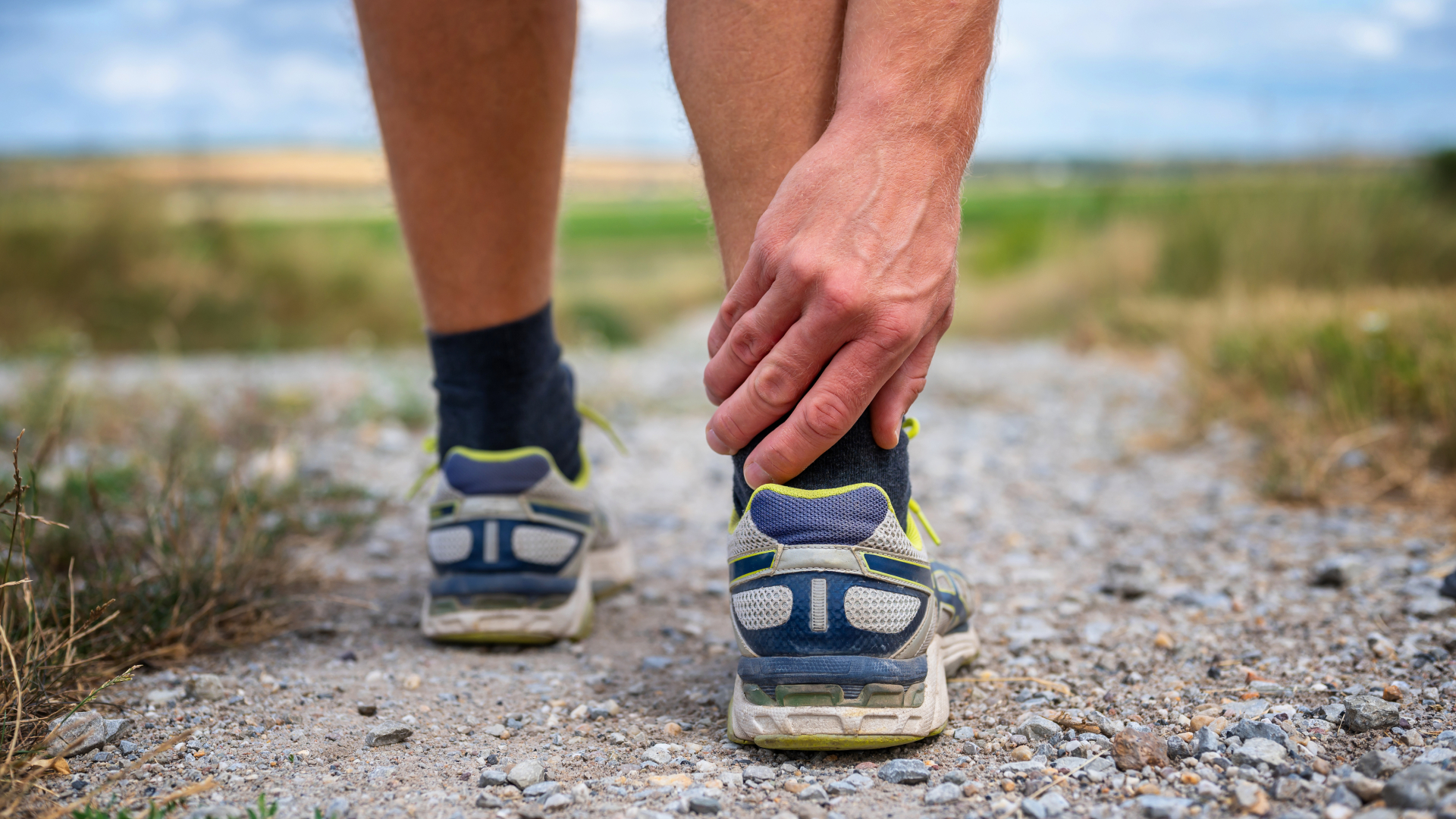I'm a runner and this physio's advice helped me manage my Achilles pain

Achilles tendinopathy is a common condition that can linger for months or years, and treating it is not always straightforward. I’m a keen runner and first noticed stiffness in my Achilles each morning early last year. I went to a physio, which was a great help and should always be your first port of call, and have been managing the condition since then.
Fortunately my Achilles tendinopathy is mild and I’ve been able to keep running while working on strengthening my calf muscles through calf raises — I must have done thousands of calf raises at this point.
Even with mild Achilles tendinopathy I still experience tenderness when I press on the Achilles and stiffness after rest, and it’s frustrating to think it might never go away entirely. My Achilles is often on my mind, and so when I saw a video about the condition pop up on my Twitter feed I watched it straight away, and I’m very glad I did.
The video is a comprehensive guide to Achilles tendinopathy from Professor Peter Malliaras, a physiotherapist who specializes in tendinopathy who is one of the world’s leading experts on the subject, having worked in the field for over 20 years. You can watch it on his YouTube channel Tendinopathy Rehabilitation.
I found that the video was very reassuring to me on a number of concerns I have about Achilles tendinopathy and how to manage it, and what recovery from it looks like — it can take a long time and it’s important not to get discouraged. After watching it I reached out to Malliaras with some questions on Achilles tendinopathy.
What do people commonly get wrong with Achilles tendinopathy?
“People often don't appreciate how long it — not always but often — takes to get over it,” says Malliaras. “And also that the best treatments are things you can do for yourself like adjusting your load and getting active safely, not treatments that physios or doctors do to you like massage, dry needling and injections.”
What advice do you have for people frustrated that it's taking a long time to heal?
“You are not alone!” Malliaras says. “I see people at their wits end all the time and it is reassuring in a way to know that, for most people we can get them quite a lot better in a few months. Many will have some lingering pain and that is fine. It's not a failure. It's really normal.”
That lingering pain and stiffness is common and not necessarily a problem was something I definitely took away from the video, along with a few other points:
An Achilles rupture is unlikely
Managing mild Achilles tendinopathy is annoying, but my real fear is of rupturing my tendon. According to the video that’s not likely — most people who rupture their Achilles had no prior pain. Malliaras also stresses that pain doesn’t necessarily mean you’re damaging the tendon. This was reassuring to me as someone who has stayed active while the condition has improved over time.
Get instant access to breaking news, the hottest reviews, great deals and helpful tips.
I need to work harder with my calf raises
Calf raises don’t work for everyone in helping to cure Achilles tendinopathy, but you need to do them correctly to find out. Malliaras said to work to an 8/10 effort level with the exercise to build strength and also confidence, and I don’t think I’ve been hitting that high an intensity level myself of late, because I’m still doing the same exercises I was doing a year ago. Time to up the intensity!
Work out what triggers your pain
Looking back I wish I had been methodical in tracking the pain and stiffness in my Achilles from the start, because it took me a while to work out that part of the problem for me was the heel design of certain running shoes I was using. Avoiding those meant I had less stiffness after exercise. Malliaras gives great advice about tracking the condition and monitoring what causes pain, and how to adjust to it.
What does recovery look like?
This was my favorite section of the video as Malliaras gives in-depth advice about what to expect as you treat and recover from Achilles tendinopathy. The fact that it’s not uncommon to experience certain symptoms like stiffness in the morning for years was actually reassuring to me that I wasn’t managing the condition poorly.
The video also stresses the importance of focusing on progress rather than setbacks and signs of recovery like being able to be more active, or maintain activity levels while experiencing fewer symptoms. Malliaras also gives advice on how to deal with any flare ups, which are common and not something to dwell on too much as you continue to manage the condition.
More from Tom's Guide

Nick Harris-Fry is an experienced health and fitness journalist, writing professionally since 2012. He spent nine years working on the Coach magazine and website before moving to the fitness team at Tom’s Guide in 2024. Nick is a keen runner and also the founder of YouTube channel The Run Testers, which specialises in reviewing running shoes, watches, headphones and other gear.
Nick ran his first marathon in 2016 and became obsessed with the sport. He now has PBs of 2hr 25min for the marathon and 15min 30sec for 5K. Nick is also a qualified Run Leader in the UK.
Nick is an established expert in the fitness area and along with writing for many publications, including Live Science, Expert Reviews, Wareable, Coach and Get Sweat Go, he has been quoted on The Guardian and The Independent.

